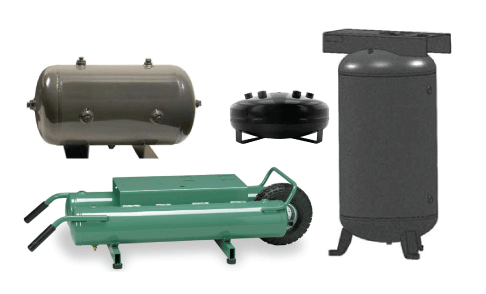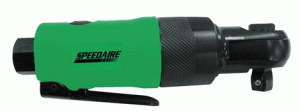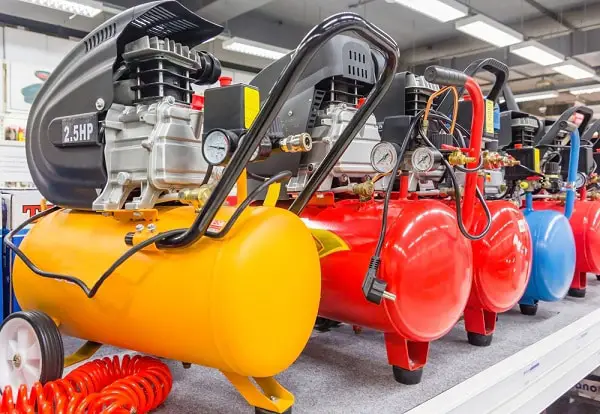If you are out searching for an air compressor, you will soon see that they come with a huge variety of tank sizes; so who cares about compressor tank size?
The compressed air sure doesn’t care.
Whether the tank is pancake shaped, has two small tanks stacked on top of each other, whether the compressor tank is huge and horizontal or is like a tube on end or whether it’s attached to a wheelbarrow, the tank shape really has no bearing on the compressed air itself.
Other than the important fact that all compressor tanks should have a manual drain located at the lowest spot in the tank – one that you should open regularly to drain compressor generated water – who really cares what the tank looks like?
You shouldn’t care about what the compressor tank looks like, but… you should certainly care about what SIZE the compressor tank is when shopping for an air compressor.
Who cares about compressor tank size then?
You likely already know that most compressors will start when the tank pressure reaches a low level cut in pressure setting. The compressor motor starts, pumps air into the tank, and when the tank pressure reaches the high level cut out, the compressor motor stops.
If you have a 1 gallon air tank, and the air compressor is set to shut off at 90 PSI, when the compressor stops you will have 1 gallon of air pressurized to 90 PSI.
The actual cut in and cut out pressures on your compressor will not likely be those shown here for example purposes.
How much air is 1 gallon of air at 90 PSI?
If you divide the number of gallons of the tank size by 7.48 you will end up with the number of cubic feet of air in that tank.
The one gallon tank will have approximately .137 cubic feet of air in it.
So who cares?
Well, let’s look at a popular air tool. For sake of example, lets say you want to drive a small ratchet wrench like this one, with your compressor with its 1 gallon air tank.
This air ratchet, made for Speedaire, needs 90 PSI to run. Yep, we’ve got that in our air tank.
This ratchet also needs that 90 PSI delivered at the rate of 15 cubic feet per minute in order for it to run right. This ratchet needs .25 cubic feet of air per second to run properly.
Whoops! Our one gallon tank will only be able to run this ratchet for about half a second before the tank is empty.
In fact, a little air compressor with a one gallon tank hasn’t got a hope of delivering enough air to run this ratchet.
A bigger air tank is better!
A general rule then is you buy an air compressor with the biggest tank you can afford, so that, when the air compressor fills and stops, you have a larger reservoir of pre-compressed air ready to use.
It is expected that an air compressor pump that comes already installed on a large tank will have been designed to run long enough without duty cycle concerns to fill that air compressor tank to the normal cut out pressure of that tank.
It will also help that a larger air compressor on a larger tank will likely have a cut out pressure setting quite a bit higher than 90 PSI. Some industrial air compressors have tanks that will hold 200 PSI air pressure.
That’s important since, if you dial the pressure down to 90 PSI to feed the air ratchet example shown above, and you have a larger tank, then your pre-compressed air in the tank will last longer as you are not using air at the higher reservoir pressure, but lowering the pressure (and the flow) to the 90 PSI that the ratchet uses.
This means that the air compressor will cycle less frequently, which has positive ramifications for compressor life and energy consumption.
So, do care about what size tank your air compressor has.
Don’t put a small compressor pump on a larger tank that it is not designed for, however. Doing so will have negative ramifications for your compressor life and an increase energy consumption.
Who Cares About Compressor Tank Size? Anyone that wants to run air tools longer and more effectively, that’s who.




Glad you are not trying to fix a holey compressor tank. Some folks say you can, but I sure wouldn’t. Sure you can use a 60 gallon tank, as long as the duty cycle of our air compressor pump and motor can handle it. If you try to work with a too big tank, you run the risk of overheating your compressor and either getting a temperature related shut down, or for certain, increase wear on the compressor. Check with the manufacturer (or your manual) to see what they see about duty cycle. If you cannot find info, I would… Read more »
Help
My compressor came with a 30 gal. tank. Tank now has a hole in it, worn out. Can I replace with a 60 gallon tank or am I looking for problems?
How do I figure out what size of tank my compressor will handle?
Thanks Marty